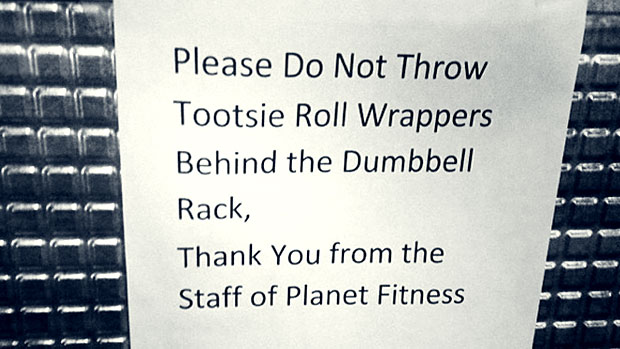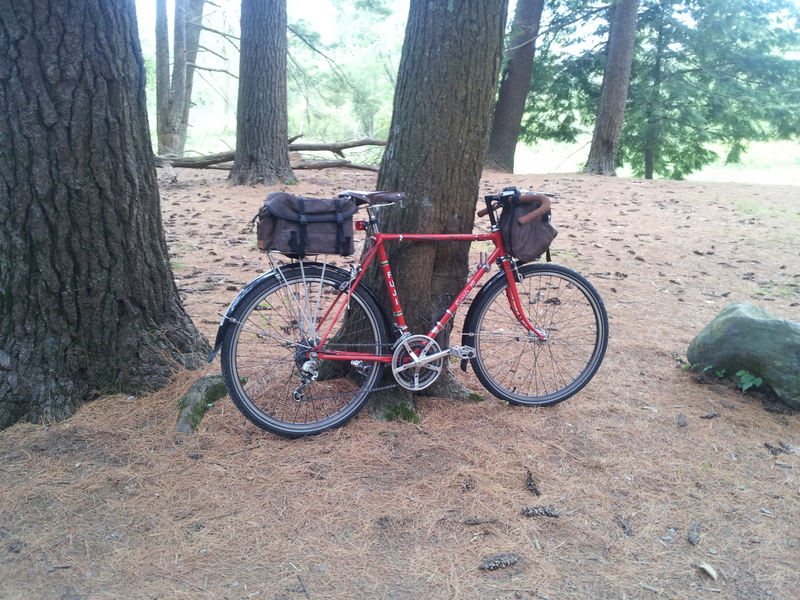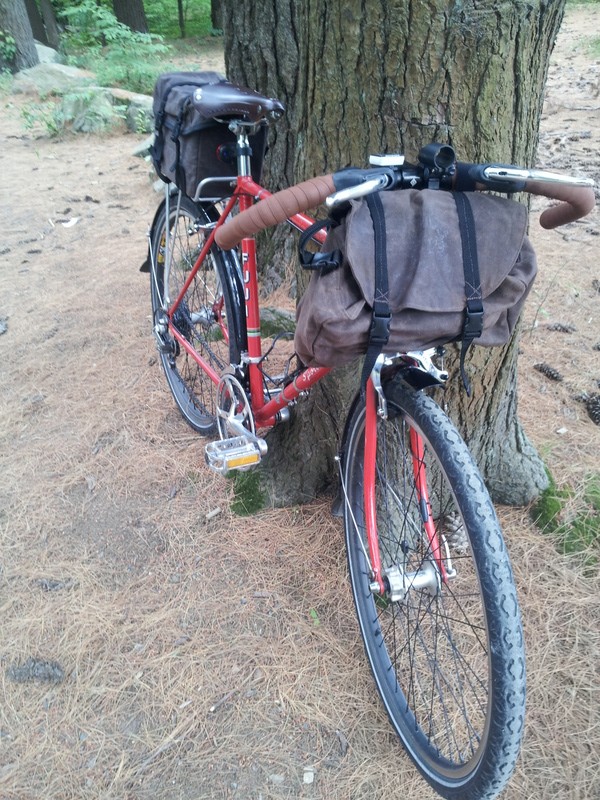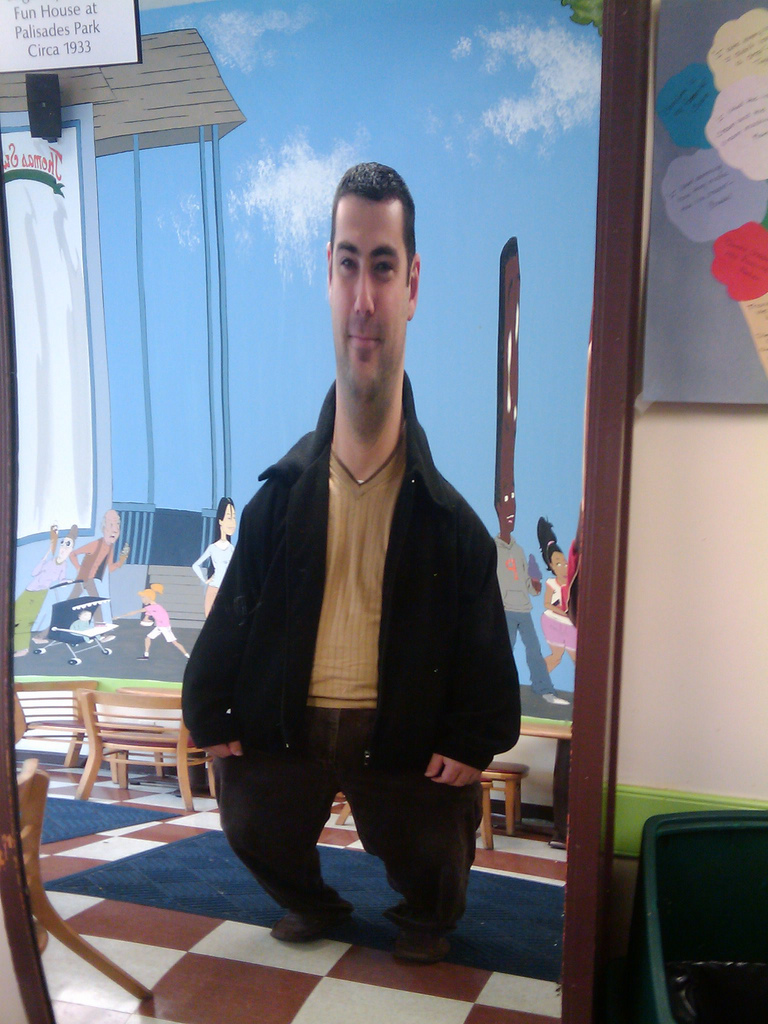 Just as night follows day, the season of dietary repentance follows the season of holiday feasting. Spiritually, all that supports the world right now are leftover well-wishes and good intentions generated by a week or two of waking up in the morning feeling like a mushroom past its prime.
Just as night follows day, the season of dietary repentance follows the season of holiday feasting. Spiritually, all that supports the world right now are leftover well-wishes and good intentions generated by a week or two of waking up in the morning feeling like a mushroom past its prime.
And this, all good health industry marketers know, is the best time to pounce on you, prying loose those few remaining dollars in your pocket, using the time-tested tools of empty promises and before-and-after photoshoots.
So here I am, the postprandial anti-Santa, to tell you the five best ways to lose all that holiday fat (and, let's face it, you also need to lose the fat leftover from last summer and fall), and keep a few dollars in your thinning fist so you can pay the credit card bill.
1. If it's a multi-level marketing plan, don't do it. Just don't.
You've seen them. Being a doctor specializing in nutrition, I get hit up a couple of times a month. A friend starts telling you about this terrific shake/powder/meal replacement that they've started doing, and they're losing a ton of weight (and it's true, too. They're living not quite so large these days) and THEY'RE MAKING MONEY AT THE SAME TIME! IT'S TOO GOOD TO BE TRUE!!
Yes. Yes it is. Do you remember when merchandisers would sell items at low prices, saying "we've cut out the middleman, and passed the savings on to you!"
Well, multi-level marketing (MLM) is the exact opposite. By the time the consumer gets their hands on an MLM product, it's passed through so many middlemen that you could fill a small school bus with them. And every single one of them takes a cut.
Of course, it is explained to you how you can get your product virtually free if you "join the team" of the "most successful product launch in history" and begin selling product yourself.
Unfortunately, that requires a large circle of rather gullible friends, most of whom will probably come to hate you when they realize the only reason you reach out to them is because you want to sell some product -- and make them a team member too.
"Oh, your father died suddenly? I'm so sorry! But I have just the thing, my company's Anti-Blues Chocolate bar! It's filled with antioxidants that combat depression and you'll lose weight every time you eat one!"
You don't want to be one of Those People.
Also, the products are just plain not that good. One of the most popular MLM parades in my area for the past couple of years has been Isagenix. They push their weight-loss plans hard. Of course, it comes with about $600 worth of supplements, bars, meal replacements, and other items you don't really need.
I looked at the label of one of their weight loss products the other day, and -- I kid you not -- the third ingredient on the label was sugar. Of course, they hid the sugar in a fancy molecule and dressed it up in a beach-body bikini so you wouldn't notice, but it was sugar nonetheless.
You don't have to be board-certified in nutritional medicine to know that lots of sugar in a weight-loss product is probably Not A Good Thing.
There are a lot of problems with MLMs in general and Isagenix in particular, but the key ones to remember are the three Os: Overpriced, Overhyped, and Overpromised.
2. Look at the photos.
Every weight loss plan worth its hype will have tons of before/after photos to support their claims, in which frumpy housewives and flabby dadbods turn into seaside eye candy. I hate to tell you, but most of those pictures are a crock. Here's how they do it.
Photoshop. There is almost nothing that a good Photoshop hand can't do. They can remove pounds, smooth cellulite and lift boobs and cheekbones with a quick wave of the mouse. It's hard to tell with the naked eye, but there are a few sites which will tell you how massively 'shopped a picture is.
There are some easier ways to tell as well. Look at the lighting and the makeup. The "before" picture is almost sure to be potato-quality, with the poor schlub standing in front of a dingy mirror reflecting a sink top full of forlorn, unused, cosmetics. The "after" picture, on the other hand, will have full lighting, a pose straight from Bodybuilder 101 class, and the unused makeup from the previous shot is getting full-on pro application. Yeah, she looks great. Unfortunately, you probably won't, unless you keep your money in a belt, which will be considerably looser after you are done paying for The Product.
Also, look at the camera angle. Every Millenial-aged single male is familiar with what's known as "the Myspace angle," which is used on every dating-social media app in the universe. The camera is placed high up and close in, which makes the subject look much thinner than they are. This photography technique has led to more disappointing first dates than pretenses of a fondness for James Joyce and Emily Bronte.
The most famous -- and easiest -- before/after sleight of hand is to just simply switch the photos around in time. A supplement company popular with the body building set once pulled this stunt. Unfortunately, the company used well-known bodybuilders as their frontmen, and some fans with dated pictures of their idols, caught them in the act.
There were apologies all around, and continued claims of massive gains with dramatic weight loss. Plus, new "real" pictures.
3. The gym has pizza night.
Yes, there are gyms that offer tremendously low cost memberships; but they are also the gyms which market directly toward people who won't use their services. Thus, they can oversell memberships without worrying about taxing their rooms and equipment beyond tolerable limits.
You can tell these gyms by the fact that they use non-fitness oriented marketing techniques, such as pizza nights.
They also promote "judgement free" workouts and have restrictive dress policies that prohibit members from demonstrating that their fitness regimen is actually working.
Yeah, I'm looking at you, Planet Fitness.
The biggest advantage of joining a gym, in addition to the equipment, is the ability to work out with, and be inspired by your peers. When you hang out with active people training to acheive their best in weight and fitness, it rubs off on you. Your energy is shared, and the camaraderie of a gym is a great support when you are working toward your goals.
The trouble is, Planet Fitness and its imitators, are not looking for those people. They don't want people who will actually come and use the facilities. They make more money by selling a service that people want but don't use.
As a result, the people at such gyms are generally not the ones who will inspire, teach and lead you. Those folks are all at the other gym where it's ok to grunt when you deadlift and wear shirts that show your biceps.
4. The weight loss plan and products use [insert aboriginal tribe] secrets.
Weight loss products that are attributed to herbs, foods, or techniques developed by ancient societies or indigenous cultures are invariably utter and complete rubbish. You know why? Because the problem of obesity is a byproduct of industrial culture. Historically, insufficient calories were more of a problem than excess calories and dysfunctional nutrition. Excess weight was therefore seen to be a sign of wealth and something to be aspired to, just as Victorians aped the pale complexions of the rich of their time, and modern Westerners imitate the tanned (and toned) bodies of what in the Sixties were called the "jet-setters."
Which brings me to another point. The incredibly toned bodies that some people aspire to are controlled works of mutable art requiring multiple hours of daily upkeep. Which is fine; dedicating yourself to that level of fitness is commendable. But the vast majority of people have not the time, money, or desire to achieve that. Also, for a large number of fitness models and bodybuilders, pharmaceuticals, legal or not, are part of what makes it work, and the fitness is for show only.
5. So what can you do to lose weight?
Losing weight can be amazingly simple. If you are starting with an overweight but generally healthy body, simply eat less and exercise more. You don't need any special supplements, aside from a multivitamin/multimineral supplement, and your nutritional knowledge is more important than your nutritional supplements. Although, honestly, if you just calculate your base metabolic rate, and keep your intake lower than your caloric usage, you will shed pounds.
It gets more complex if you have certain health issues, such as hormone imbalances or gastrointestinal dysfunction such as leaky gut or bacterial overgrowth, depression, insomnia or other conditions. Fixing those in a healthy manner is where I come in. But still the essence remains the same: Eat less and do more.
I have not put anyone except for morbidly obese patients on a weight loss diet for the better part of a decade. I use specialized diets and supplementation to help heal sick people, and weight loss is often a side effect of the nutritional therapy. As you heal, your body will find a healthy weight range on its own. After regaining your health, if you want to further decrease your weight, the answer is simple: Eat less and do more.
Rather than having to pay for it, losing weight is essentially free. Eating less de facto costs less, although the savings will be eaten up (heh) by the increased cost of better food. And anyone can exercise without a gym membership or special equipment. There are hundreds of bodyweight exercise routines on the web; you can also just step out the front door and go for a run.
So anyone trying to sell you a product-loaded weight loss plan or pills or drugs is selling you something that you already have and don't need. To lose weight, all you need are three things: A goal, some discipline, and a willingness to embrace change.
Each of those are free. Keep your money in your pocket, follow my advice, and prepare to buy new clothes.
Dr. Avery Jenkins is a chiropractic physician and board certified in Clinical Nutrition and Medical Acupuncture. He can be reached at alj@docaltmed.com or by calling 860-567-5727.
(Special thanks to Chris Herrington, DC for his inspiration for this post.)




























 The annual Fear Campaign is about to begin, as everybody with a pulse will have it hammered into their heads that if they don't get a flu shot, They Will DIE!
Remember the swine flu campaign of last year? It turned out,
The annual Fear Campaign is about to begin, as everybody with a pulse will have it hammered into their heads that if they don't get a flu shot, They Will DIE!
Remember the swine flu campaign of last year? It turned out,  30% of morning traffic consists of people taking their children to school.
30% of morning traffic consists of people taking their children to school. I've been saying this for years!
I've been saying this for years!